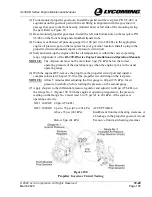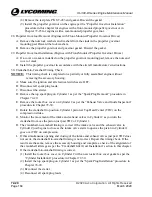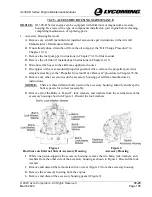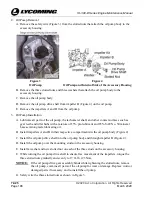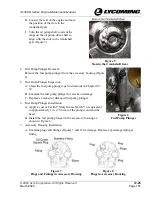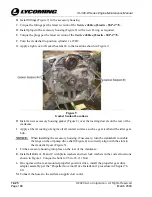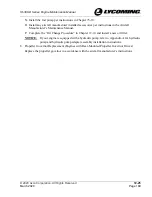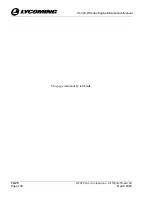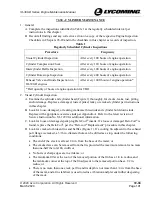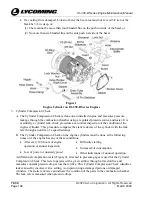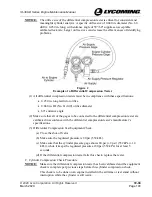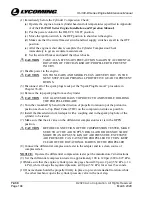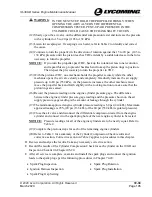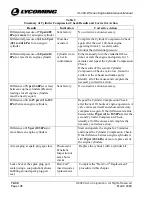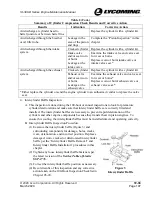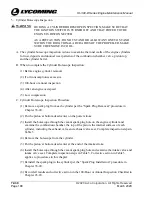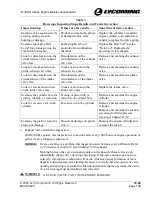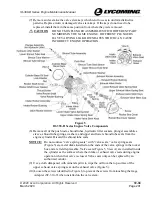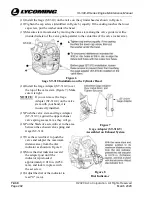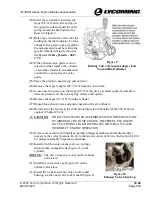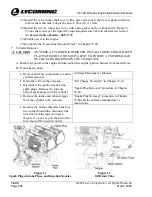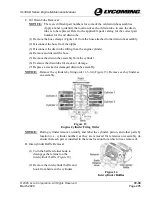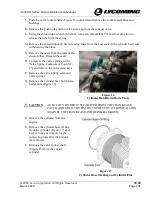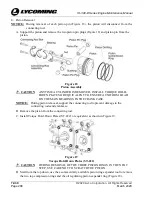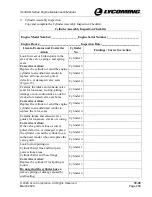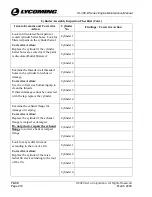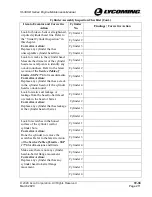
IO-390-D Series Engine Maintenance Manual
© 2020 Avco Corporation. All Rights Reserved
72-30
March 2020
Page 197
IO-390-D Series Engine Maintenance Manual
Table 2 (Cont.)
Summary of Cylinder Compression Check Results and Corrective Action
Results
Indication
Corrective Action
Air discharge at cylinder head to
barrel juncture or between barrel fins.
Replace the cylinder with a cylinder kit.
Air discharged through the breather
or oil filler tube.
Leakage in the
area of the piston
and rings.
Complete the “Piston Inspection” in this
chapter.
Air discharged through the intake
system
Cracked cylinder Replace the cylinder with a cylinder kit.
Intake valve
and/or seat worn
or burnt
Leakage at the
intake valve
Examine the intake valve and valve seat
for wear or burns.
Replace worn or burnt intake valve or
intake valve seat.*
Air discharged through the exhaust
system
Cracked cylinder Replace the cylinder with a cylinder kit.
Exhaust valve
and/or seat worn
or burnt
Leakage at the
exhaust valve
Examine the exhaust valve and valve seat
for wear or burns.*
Replace worn or burnt exhaust valve or
exhaust valve seat.*
* Either replace the cylinder or send the engine cylinder to an authorized vendor to replace the valve
seat.
4.
Intercylinder Baffle Inspection
A.
This inspection is done during the 100-hour or annual inspections to look for premature
cylinder deterioration and make sure that intercylinder baffles are correctly fitted and
installed. The intercylinder baffles are necessary to prevent rapid deterioration of the
cylinders and other engine components because they transfer heat in piston engines. To
ensure this cooling, the intercylinder baffles must be installed intact and operating correctly.
B.
Intercylinder Baffle Inspection Procedure
(1)
Examine the intercylinder baffle (Figure 3) and
surrounding components for damage, holes, cracks,
wear, deterioration, and incorrect position. Replace a
damaged, worn, cracked or deteriorated intercylinder
baffle per the “Intercylinder Baffle Removal” and
Intercylinder Baffle Installation” procedures in this
chapter.
(2)
Tighten any loose intercylinder baffle fasteners per
the latest revision of the
Service Table of Limits
SSP-1776
.
(3)
Correct the intercylinder baffle position as necessary.
(4)
Record results of this inspection and any corrective
action taken on the 100-Hour Inspection Checklist in
Chapter 05-20.
Figure 3
Intercylinder Baffle

